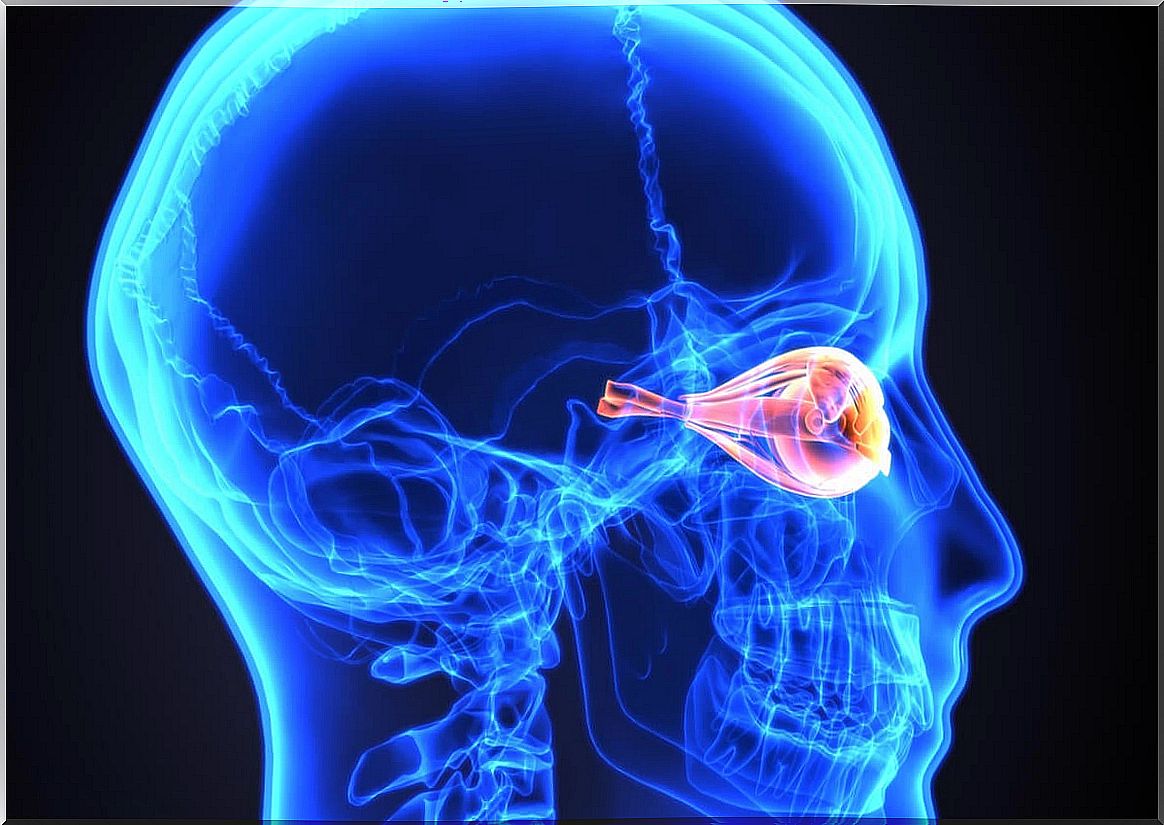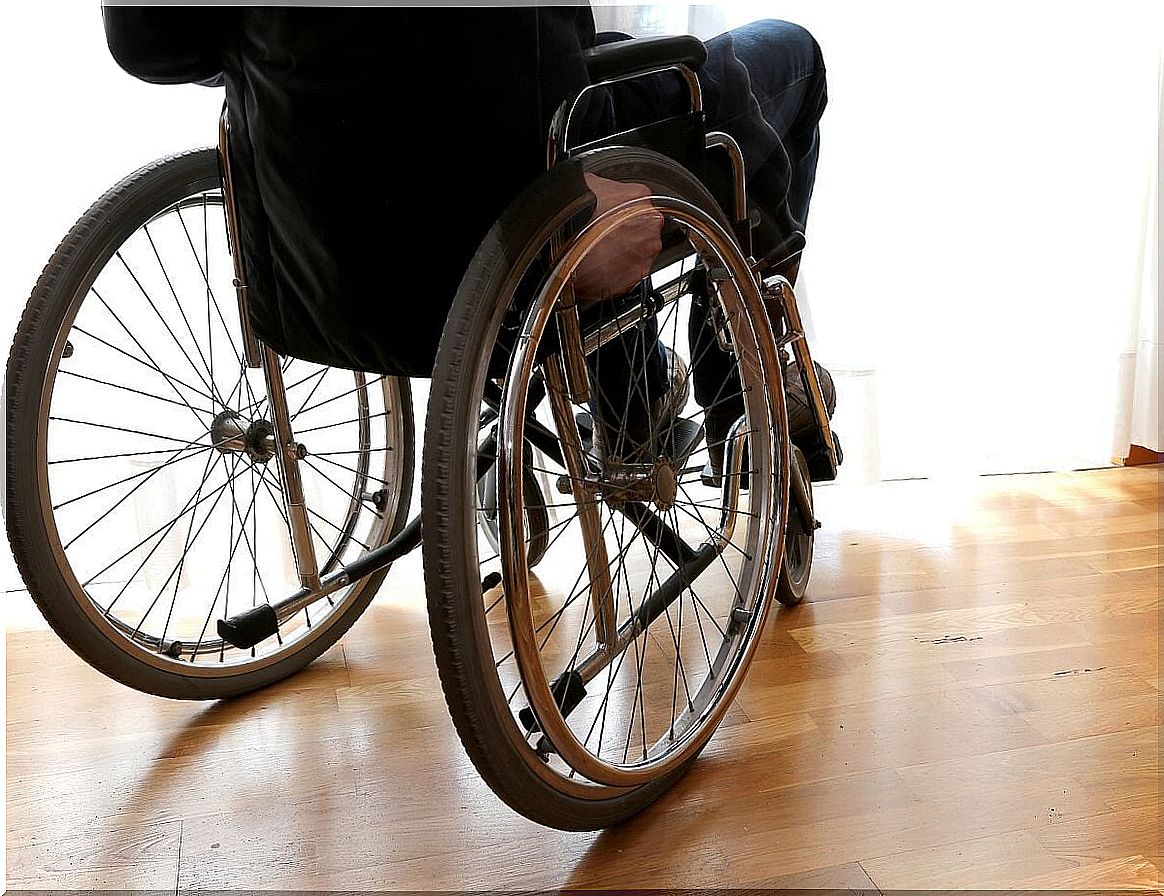Neuromyelitis Optica Or Devic’s Disease: What Is It About?
Neuromyelitis optica is a serious and chronic autoimmune disease that involves demyelination of the optic nerve and spinal cord. It can be confused with multiple sclerosis.

Autoimmune diseases are a group of pathologies in which the cells in charge of the body’s defense attack its own organs. Neuromyelitis optica (NMO) is a condition that falls within this group and is characterized by the demyelination of certain areas of the central nervous system (CNS).
The entire CNS is covered by a substance called myelin , which is involved in the correct transmission of nerve impulses. In neuromyelitis optica, specific antibodies will attack proteins located in the spinal cord and optic nerve: aquaporins 4, altering their correct functioning.
This pathology is also known as Devic’s disease and has a relapsing presentation with relapses in 70% of cases. The most frequent symptoms are alterations related to inflammation of the optic nerve and the spinal cord.
Similarities and Differences Between NMO and Multiple Sclerosis
Multiple sclerosis (MS) is an autoimmune disease that also attacks the central nervous system, so it can be confused with NMO. In fact, neuromyelitis optica was considered a type of multiple sclerosis for many years.
The two pathologies in question affect the structures that make up the central nervous system, causing demyelination. Both diseases affect the spinal cord, however, MS is capable of altering various brain structures, while NMO is limited to the optic nerve.
The symptomatology presented by the patients is very similar, since both have recurrent and unique presentations. On the other hand, people with multiple sclerosis also have optic neuritis and myelitis, so visual and sensory problems are frequent.
The main difference between the two is the humoral alteration in neuromyelitis optica. Studies have shown that the majority of patients with NMO have anti-aquaporin 4 antibodies, which are very rare in people with MS.

Symptoms of neuromyelitis optica
As already mentioned, the clinic presented by people with NMO will be related to optic neuritis and transverse myelitis. It can be bilateral or unilateral, in addition to altering a structure of the optic nerve called the optic chiasm. Among the most relevant ophthalmological symptoms, the following stand out:
- Decreased visual acuity.
- Sight loss.
- Eye pain
- Tiredness in the eyes
- Oculomotor dysfunction.
On the other hand, the spinal cord will also be affected by an inflammatory process in at least 3 segments, which is why neurological symptoms may appear. In this sense, the main alterations include the following:
- Inability to move one or more limbs.
- Alterations in sensitivity.
- Loss of sphincter control.
- Muscle spasms.
- Nausea and vomiting
People diagnosed may have relapses between 2 and 3 years after the initial episode. Neuromyelitis optica is more common in women from the age of 39. Studies show that the motor impairment in women is usually worse than in men.
How can neuromyelitis optica be diagnosed?
Carrying out the precise diagnosis of this pathology can be a complex task for specialists, so a series of different tests will be necessary. In this sense, the doctor must distinguish with other neurological pathologies.
Anti-aquaporin 4 antibodies
One of the main results that guide the diagnosis of neuromyelitis optica is the presence of anti-aquaporin 4 antibodies in the bloodstream. These antibodies are found in more than 70% of patients with the disease, so they are a clear indication.
These molecules are responsible for the destruction of aquaporins 4 in the CNS and subsequent demyelination. Despite being a recent discovery, it has proven useful in early diagnosis.
Imaging studies
Magnetic resonance imaging is the imaging study of choice used in this case. The test uses magnets and radio waves to create a detailed image of CNS structures. Doctors can detect some damage to the brain or spinal cord.
Patients with neuromyelitis optica will have an evident lesion in the spinal cord, generally at the level of the second thoracic vertebra, which will be repeated in 3 consecutive spinal segments. In addition, the exam determines that the only brain structure affected is the optic nerve.
Cerebrospinal fluid (CSF) studies
Specialists can remove a small amount of CSF for analysis. The fluid in question shows a high amount of proteins and white blood cells when neuritis occurs, which is higher than those found in patients with multiple sclerosis.
Presence of diagnostic criteria
Since 1999, a series of criteria have been established that are present in all patients with neuromyelitis optica. These were modified in 2006. In total there are 3 definitive ones that indicate the presence of the disease:
- Optic neuritis.
- Acute myelitis.
- Absence of clinical disease outside the spinal cord and optic nerves.

Treatment of neuromyelitis optica
The symptoms of the disease are caused by an inflammatory process, so the use of corticosteroids helps to reduce the impact of the signs. In addition, these types of medications prevent future relapses.
When corticosteroids do not improve symptoms, a plasma exchange may be necessary. This procedure involves the removal of blood from the body which is then separated from the plasma or fluid from the cells and replaced with a synthetic analog.
Plasma exchange is a process that can take hours and must be done multiple times. Finally, the doctor prescribes immunosuppressive drugs. These decrease the activity of the immune system, thereby reducing damage to the structures of the CNS.
Recommendations for the diet of a person with NMO
All patients diagnosed with NMO must make a change towards a healthier lifestyle, in ways that prevent or slow the progression of the disease. In this sense, it is advisable to make modifications to the diet.
It is important that patients check in with a nutritionist in order to follow an adequate plan according to the pathology they present. Among the recommendations that can be followed, the following stand out:
- Increase the intake of vegetables: fruits, cereals and grains.
- Reduce foods rich in saturated fat and carbohydrates.
- Drink between 5 and 8 glasses of water or fluids without sugar.
- Eliminate the consumption of alcohol and coffee.
NMO: a disease difficult to diagnose
Neuromyelitis optica is a degenerative autoimmune disease with ocular and neurological symptoms. This pathology can be confused with others of the CNS. Fortunately, diagnostic methods have advanced greatly.
There is no specific treatment for this disease, however, corticosteroids and immunosuppressants help the patient to improve. It is important for people with NMO to make lifestyle changes in order to avoid progression and relapse.









